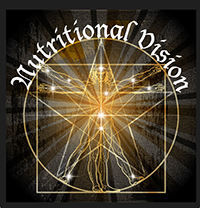Anthocyanins in black raspberries prevent esophageal tumors in rats.
– GreenMedInfo Summary
Abstract Title:
Anthocyanins in black raspberries prevent esophageal tumors in rats.
Abstract Source:
Cancer Prev Res (Phila Pa). 2009 Jan;2(1):84-93. PMID: 19139022
Abstract Author(s):
Li-Shu Wang, Stephen S Hecht, Steven G Carmella, Nanxiong Yu, Bethany Larue, Cassandra Henry, Colleen McIntyre, Claudio Rocha, John F Lechner, Gary D Stoner
Article Affiliation:
Ohio State University Comprehensive Cancer Center, 2001 Polaris Parkway, Columbus, OH 43240, USA.
Abstract:
Diets containing freeze-dried black raspberries (BRB) suppress the development of N-nitrosomethylbenzylamine (NMBA)-induced tumors in the rat esophagus. Using bioassay-directed fractionation, the anthocyanins in BRB were found to be the most active constituents for down-regulation of carcinogen-induced nuclear factor-kappaB and activator protein-1 expression in mouse epidermal cells in vitro. The present study was undertaken, therefore, to determine if the anthocyanins contribute to the chemopreventive activity of BRB in vivo. F344 rats consumed diets containing either (a) 5% whole BRB powder, (b) an anthocyanin-rich fraction, (c) an organic solvent-soluble extract (a-c each contained approximately 3.8 micromol anthocyanins/g diet), (d) an organic-insoluble (residue) fraction (containing 0.02 mumol anthocyanins/g diet), (e) a hexane extract, and (f) a sugar fraction (e and f had only trace quantities of anthocyanins), all derived from BRB. Animals were fed diets 2 weeks before treatment with NMBA and throughout the bioassay. Control rats were treated with NMBA only. Animals were killed at week 30, and esophageal tumors were enumerated. The anthocyanin treatments (diet groups a-c) were about equally effective in reducing NMBA tumorigenesis in the esophagus, indicating that the anthocyanins in BRB have chemopreventive potential. The organic-insoluble (residue) fraction (d) was also effective, suggesting that components other than berry anthocyanins may be chemopreventive. The hexane and sugar diets were inactive. Diet groups a, b, and d all inhibited cell proliferation, inflammation, and angiogenesis and induced apoptosis in both preneoplastic and papillomatous esophageal tissues, suggesting similar mechanisms of action by the different berry components.
Academic Cite:
Li-Shu Wang, Stephen S Hecht, Steven G Carmella, Nanxiong Yu, Bethany Larue, Cassandra Henry, Colleen McIntyre, Claudio Rocha, John F Lechner, Gary D Stoner. Anthocyanins in black raspberries prevent esophageal tumors in rats. Cancer Prev Res (Phila Pa). 2009 Jan;2(1):84-93.
Pubmed-Cite:
Li-Shu Wang, Stephen S Hecht, Steven G Carmella, Nanxiong Yu, Bethany Larue, Cassandra Henry, Colleen McIntyre, Claudio Rocha, John F Lechner, Gary D Stoner. Anthocyanins in black raspberries prevent esophageal tumors in rats. Cancer Prev Res (Phila Pa). 2009 Jan;2(1):84-93. PMID: 19139022
GMI-Cite:
Li-Shu Wang, Stephen S Hecht, Steven G Carmella, Nanxiong Yu, Bethany Larue, Cassandra Henry, Colleen McIntyre, Claudio Rocha, John F Lechner, Gary D Stoner. Anthocyanins in black raspberries prevent esophageal tumors in rats. Cancer Prev Res (Phila Pa). 2009 Jan;2(1):84-93. PMID: 19139022
Article Published Date : Jan 01, 2009
Study Type : Animal Study
Additional Links
Substances : Anthocyanins : CK(372) : AC(136), Raspberry : CK(47) : AC(32)
Diseases : Esophageal Cancer : CK(506) : AC(85), Inflammation : CK(3240) : AC(882)
Pharmacological Actions : Antiproliferative : CK(2546) : AC(1685), Apoptotic : CK(2958) : AC(2075)
Additional Keywords : Plant Extracts : CK(7645) : AC(2539)

No Comments Yet